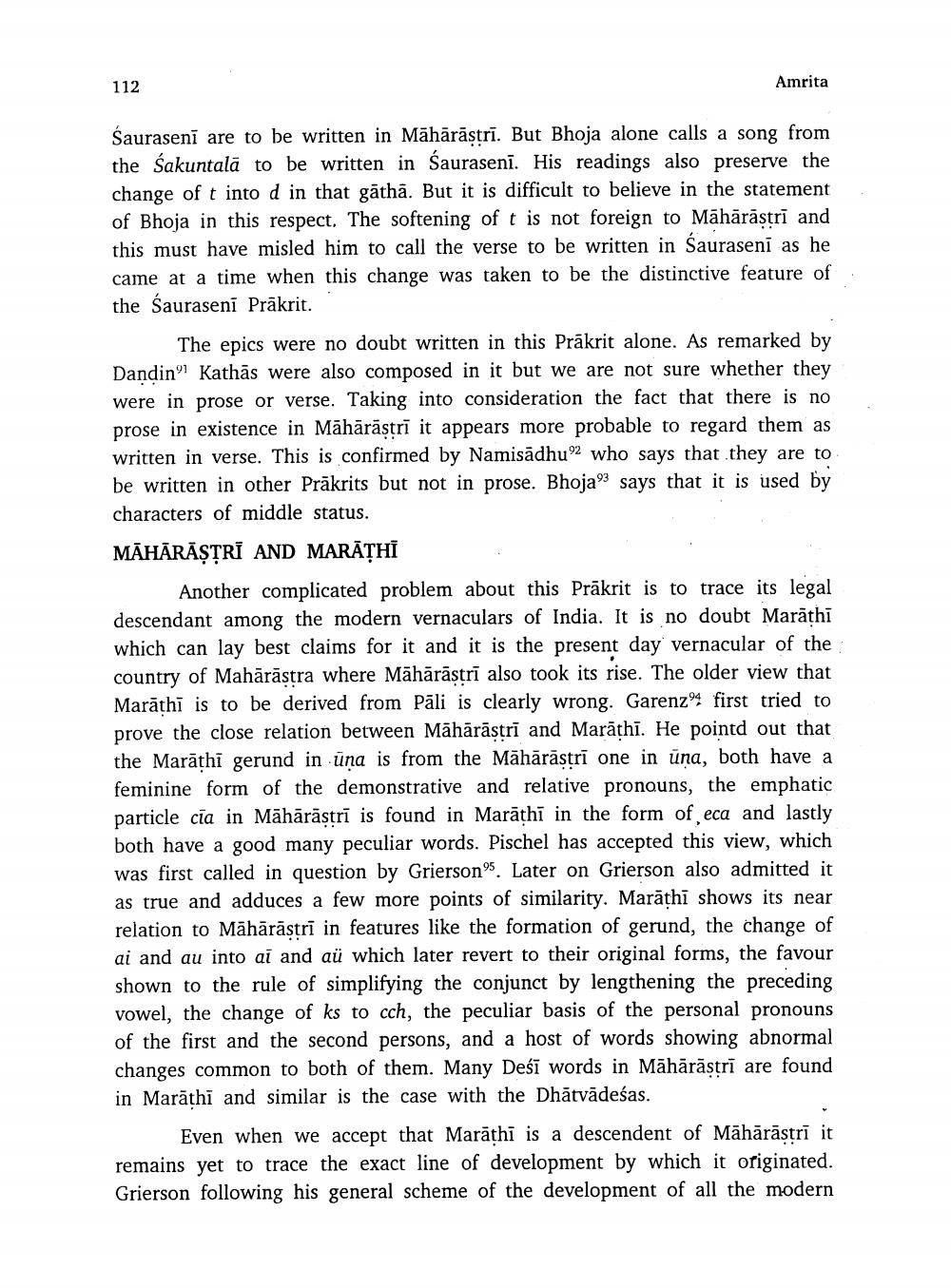________________
112
Amrita
Sauraseni are to be written in Māhārāstrī. But Bhoja alone calls a song from the sakuntalā to be written in Saurasenī. His readings also preserve the change of t into d in that gātha. But it is difficult to believe in the statement of Bhoja in this respect. The softening of t is not foreign to Māhārāstrī and this must have misled him to call the verse to be written in Sauraseni as he came at a time when this change was taken to be the distinctive feature of the Saurasenī Prākrit.
The epics were no doubt written in this Prākrit alone. As remarked by Dandin” Kathās were also composed in it but we are not sure whether they were in prose or verse. Taking into consideration the fact that there is no prose in existence in Māhārāstrī it appears more probable to regard them as written in verse. This is confirmed by Namisādhuo who says that they are to be written in other Prākrits but not in prose. Bhojao says that it is used by characters of middle status. MĀHĀRĀȘTRĪ AND MARĀȚHI
Another complicated problem about this Prākrit is to trace its legal descendant among the modern vernaculars of India. It is no doubt Marathi which can lay best claims for it and it is the present day vernacular of the country of Mahārāstra where Māhārāstrī also took its rise. The older view that Marāthi is to be derived from Pāli is clearly wrong. Garenzo first tried to prove the close relation between Māhārāstrī and Marāthī. He pointd out that the Marāthi gerund in ūna is from the Māhārāstrī one in ūna, both have a feminine form of the demonstrative and relative pronouns, the emphatic particle cia in Māhārāstrī is found in Marathi in the form of eca and lastly both have a good many peculiar words. Pischel has accepted this view, which was first called in question by Grierson". Later on Grierson also admitted it as true and adduces a few more points of similarity. Marathi shows its near relation to Māhārāstrī in features like the formation of gerund, the change of ai and au into ai and aü which later revert to their original forms, the favour shown to the rule of simplifying the conjunct by lengthening the preceding vowel, the change of ks to cch, the peculiar basis of the personal pronouns of the first and the second persons, and a host of words showing abnormal changes common to both of them. Many Deśī words in Māhārāstri are found in Marāthi and similar is the case with the Dhātvādeśas.
Even when we accept that Marathi is a descendent of Māhārāstri it remains yet to trace the exact line of development by which it originated. Grierson following his general scheme of the development of all the modern




